Planning to move with the times?

By Richard Anderson
Like all sectors across the world the planning profession has been jolted into “new normal.” At a practical level this meant the shift from office to home which for individuals or small companies may have been relatively straightforward (my colleagues and I were already working from home to some extent). However, try uprooting the majority of Council functions to the home and the response was mixed. In terms of rapidity and maintaining contact ability, this at both direct officer level and when it comes to discharge of statutory functions (e.g. Planning Committee) was mixed, although I would credit Broxbourne Council being able to adapt remarkably quickly and almost seamlessly.
Fifteen months on and where do we stand? Well, due to the Government not passing the necessary legislation allowing virtual determination of planning applications to continue, Councillors must determine applications in person, in situ, i.e. back in the traditional Council Chamber, or not …
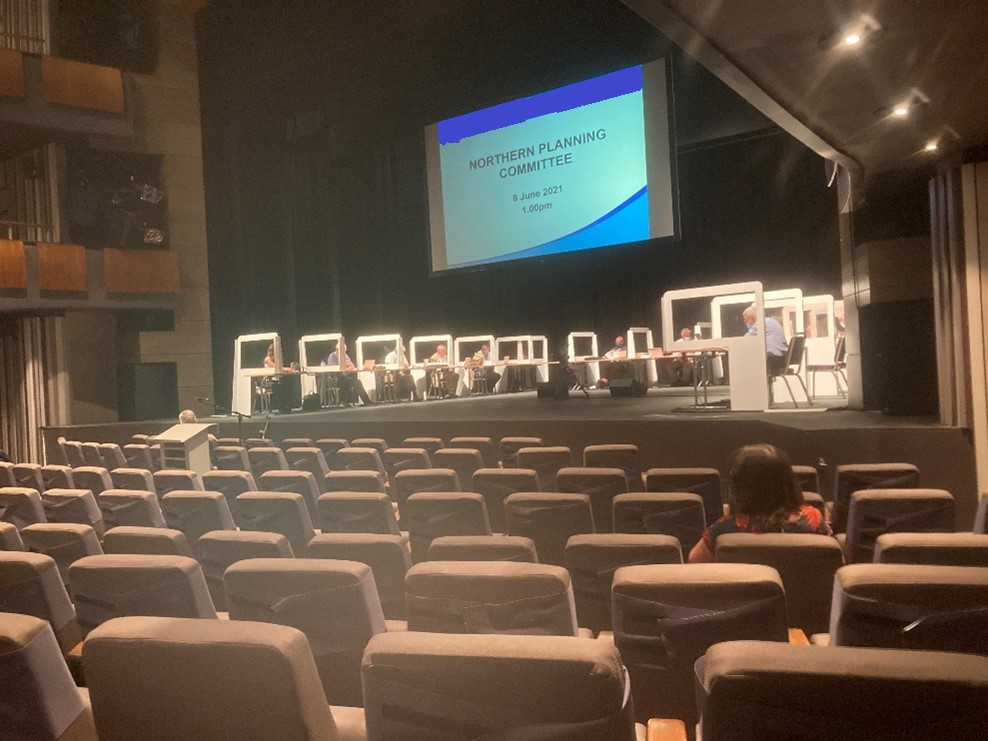
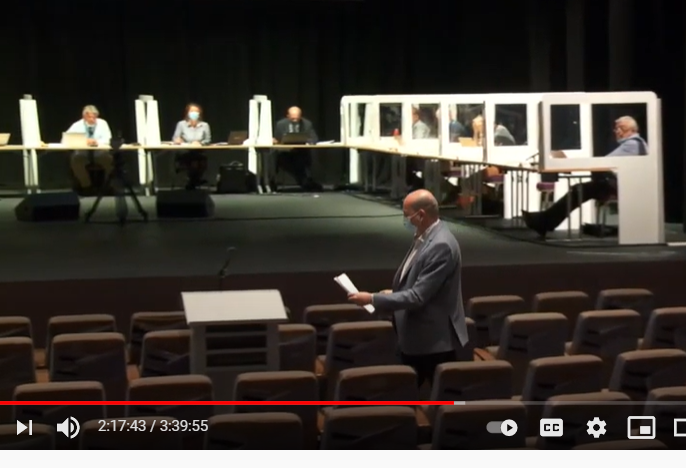
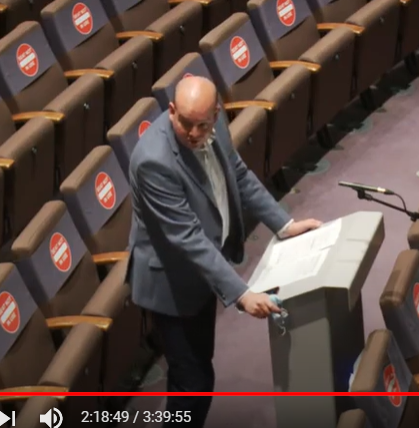
Actually, my attendance and speaking before a planning committee earlier this month, who had de-camped from the town hall to the local theatre with the planning committee literally becoming centre stage! Whilst some amateur dramatists may relish such a show, the scene was set for a very different hybrid planning committee performance (also available to view online) and thankfully, at least for my client and I planning permission was granted! I must add this was a well organised and conducted meeting with no Jackie Weaver or disgruntled and verbose Members present.
Another arena where planning has had to, quite frankly catch-up with reality, has been and I trust, will continue to be (at least in part) what is part of the stable diet of most planning applications – the public consultation/presentation in that application’s locality. Out the window went sitting in a dusty Parish Council hall on a damp autumnal evening anticipating a smattering of local’s taking interest in the development proposed. This, alongside the hope that the known NIMBYs prefer to sit at home and enjoy the latest box-set on Netflix. Along comes virtual consultation and the opportunity to not only reach out to a wider section of the populous but to be able to exercise a degree of control not always possible with traditional consultation methods.
A great deal more thought and planning has had to go into tailoring an online public consultation event. It has been seen on several occasions that more people engage in this manner with a greater proportion of supporters or neutrals voicing their opinion not always a vocal minority commanding the stage whilst a silent majority wait in the wings. I appreciate this may not always be the case but it has been observed by our team.
A person who is infinitely better able to comment on such matters is our own Communications Consultant, Claire Winterflood.
“Virtual consultation allows us to reach a far wider and more disparate audience. This is not just in terms of numbers or locality but also in terms of age. Events can have broad parameters but then refined to reach out to younger or older audiences all under the single proposed project banner. Also, prior to consultation actually occurring it has become easier to identify “groups of interest” some of whom themselves have resorted more to the web to highlight projects of their concern and this is in the public domain for us to recognise and pivot our events accordingly.
Finally, the ability to view Planning Committees in virtual action enables us to understand better, in advance of our applications going before them who the main protagonists are (or are not) and who may have particular common but specific themes of concern, e.g. EV charging points, pedestrian/cyclist accessibility.”
Aside from having to abandon the in-person stakeholder meetings it has also been noted that alternative approaches to seeking interest/buy-in from stakeholders has been carried out.
Here I turn to Yoo-Capital who, hot on the heels of beginning to redevelop Earls Court (arena/exhibition halls) are now turning their attentions to Shepherd’s Bush Market in West London within spitting distance of that retail coliseum Westfield. In terms of scale, sensitivity and actual ability to build-out hectares of new development, the approach taken on at least one level is different. Rather than the issue of a fairly anodyne leaflet or letter inviting residents to a virtual consultation, a folded A3 newsletter landed in my letter box not, on the cover saying anything – intrigue …

The majority of the document being market related news (vendors, families, produce) with only 1/16th given over to the message …
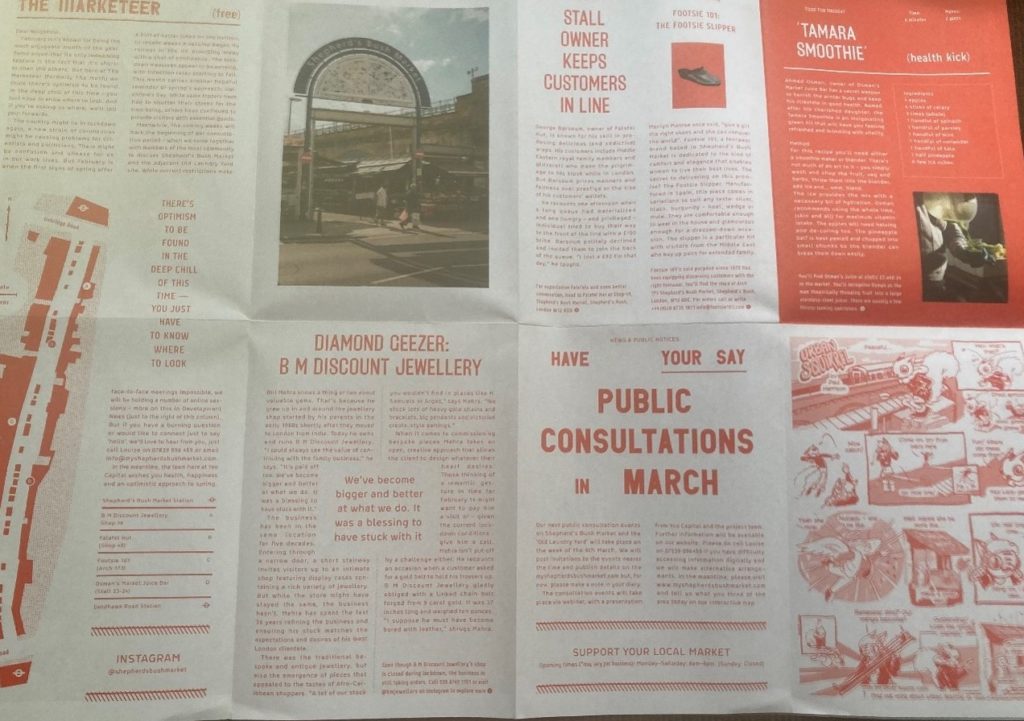
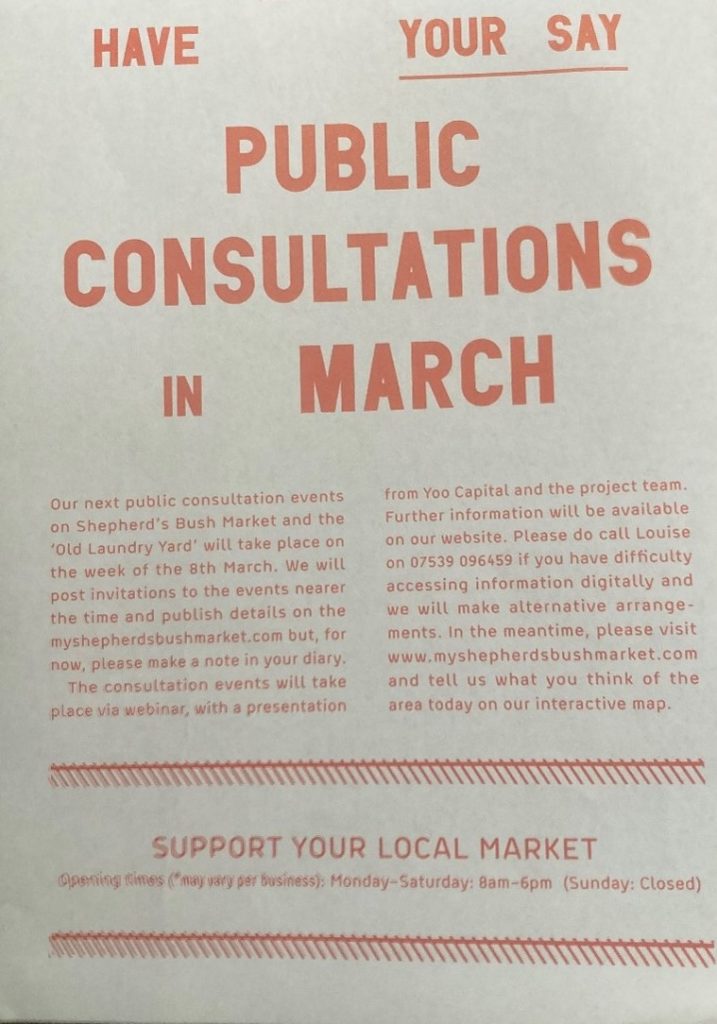
Message received, loud and clear and has already led to 2 well publicised, organised and attended virtual consultation events. Importantly, this is not a quick fix developer solution. This site already had undergone a tarnished series of events and other matters which led to the company who went into Joint Venture with the Local Authority leaving the project in fairly acrimonious terms. Yoo-Capital, the new company, commenced this initial consultation back in March 2020, fast forward over a year later and plans have not yet come forward but Yoo-Capital’s direct assistance to the market traders and their company name is still very much in the eye (and not just in development professionals’ eyes like mine).
Finally, one area where the Government is keen to propel planning into the 21st century (and beyond) is that of digitising.
Whilst planning applications can be viewed online, authorities websites vary in their accessibility with some …
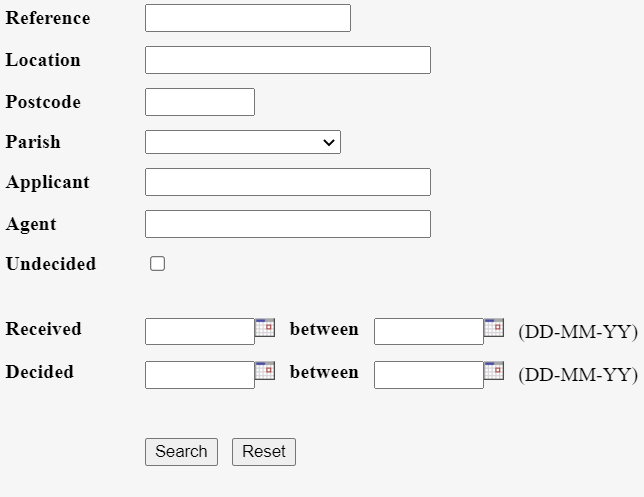
Whilst with others (will mention the authority as it is where I live!) such as the London Borough of Hammersmith and Fulham far more accessible with the ability to zoom in on a map and pick out individual properties …
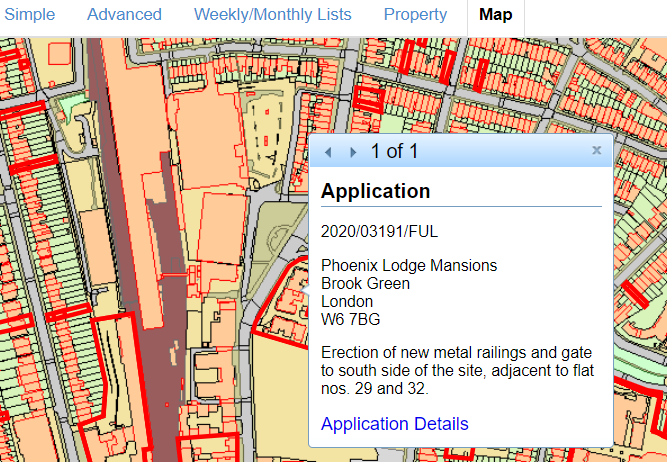
With planning applications digitised to varying degrees of accessibility on 1 June, the Government announced it is turning its attention to using digital tools so planning proposals and plans are more accessible and interactive. 10 authorities including one next to me, Royal Borough of Kensington and Chelsea will share £1.1m. This is intended to test digital tools and data standards across those areas “digitally transforming local plans to increase community involvement and speed up the planning process.”
Overall, planning is trying or being forced to try and move with the times, this encouraging/forcing, relative luddites such as I to also move along/catch-up. A colleague and I attended a seminar yesterday where a key message was trust and transparency with mention being made of tik-tok, apps, online youth forums and more!
With the commencement of stakeholder consultation for a site which I am working on about to commence, I will come back in around a year’s time and (now confidently) demonstrate how we have managed to adapt our consultation approach to result in planning permission being granted!





